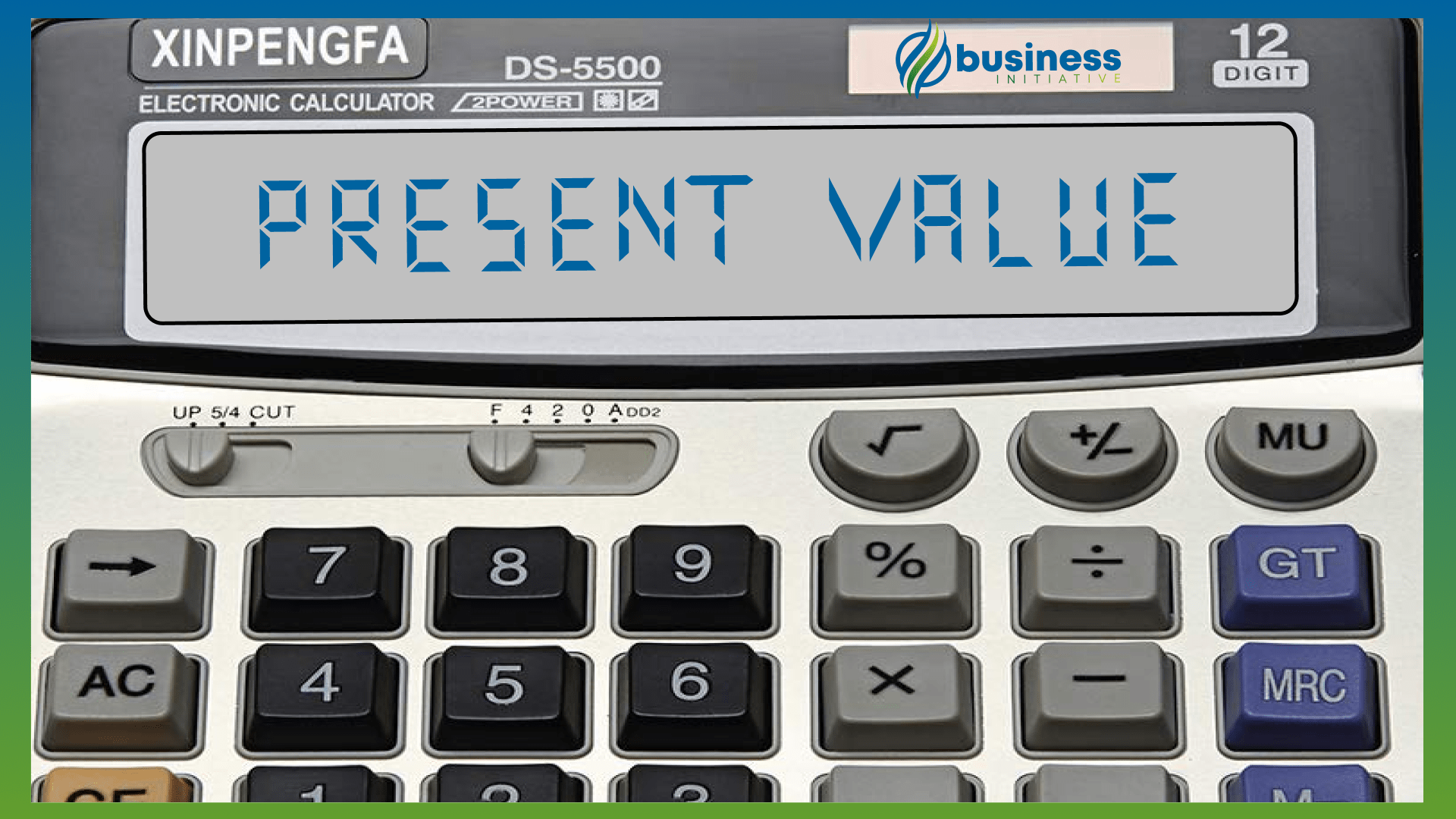What is Present Value?
Present value is a financial concept that helps individuals and businesses determine the current value of future cash flows.
It’s a fundamental principle in finance that accounts for the time value of money - the idea that a dollar today is worth more than a dollar tomorrow due to its potential earning capacity.
➤ MORE: Learn how to properly use Present Value in your business!
How to Use the Present Value Calculator
Using this calculator is straightforward:
1. Enter Future Value:
Input the amount of money you expect to receive in the future.
2. Enter Number of Periods:
Input how many periods (years, months, etc.) until you receive the money.
3. Enter Interest Rate:
Input the expected interest rate or discount rate (as a percentage).
4. Calculate:
Click the calculate button to find the present value of your future cash flow.
Present Value Calculator
Understanding the Results
The calculator provides two key metrics:
- Present Value: The current worth of your future cash flow, taking into account the time value of money
- Discount Amount: The difference between the future value and present value, representing the “cost” of waiting
Common Use Cases
- Investment Analysis: Evaluate the current value of future investment returns
- Loan Decisions: Determine if a future payment is worth taking on debt
- Business Planning: Assess the value of future revenue streams
- Retirement Planning: Calculate the present value of future retirement income
- Contract Negotiations: Evaluate the worth of future payments or settlements
Making Strategic Decisions
Use these results to:
- Compare investment opportunities
- Make informed borrowing decisions
- Evaluate business projects
- Plan for future financial needs
- Negotiate better terms on contracts
Why is Present Value Important?
Understanding present value is crucial for making informed financial decisions because it:
- Accounts for the time value of money
- Helps compare different investment opportunities
- Provides a standardized way to evaluate future cash flows
- Enables better long-term financial planning
- Supports more accurate business valuations
FAQs - Frequently Asked Questions About Present Value

What is the difference between present value and future value?
Present value is the current worth of a future cash flow, while future value is the amount that an investment will be worth at a specific point in the future.
Learn More...
Present value takes into account the time value of money, which means that money is worth more today than it will be in the future due to inflation and other factors.
Future value, on the other hand, assumes that money will grow over time due to compounding interest or other factors.
How do you determine an appropriate discount rate for present value calculations?
The appropriate discount rate depends on several factors, including the riskiness of the investment opportunity or project and prevailing market conditions.
Learn More...
In general, investments with higher levels of risk require higher discount rates because investors demand a greater return to compensate them for taking on additional risk.
Market conditions such as inflation rates and interest rates can also impact discount rates.
It's important to carefully consider these factors when determining an appropriate discount rate for present value calculations.
Can present value be used to compare investment opportunities with different time horizons?
Yes, present value can be used to compare investment opportunities with different time horizons by converting all expected cash flows into their current values.
Learn More...
By converting all cash flows into their current values using present value calculations, investors can more easily compare different investment opportunities with varying time horizons.
This approach allows investors to make apples-to-apples comparisons based on each opportunity's net present value (NPV), which takes into account both inflows and outflows over time.
How accurate are present value calculations?
Present value calculations are estimates based on assumptions about future events and market conditions, so they are not guaranteed to be completely accurate predictions of what will happen in the future.
Learn More...
Present value calculations are based on assumptions about future events and market conditions, which may not unfold as expected.
However, by carefully considering these factors and using appropriate discount rates, investors can make more informed decisions about investment opportunities or projects.
It's important to understand the limitations of present value calculations and to use them in conjunction with other financial analysis techniques.
Are there any other financial concepts that are related to present value?
Yes, several financial concepts are related to present value, including net present value (NPV), internal rate of return (IRR), and discounted cash flow (DCF) analysis.
Learn More...
Net present value is a measure of the total expected monetary gain or loss from an investment opportunity or project over time.
Internal rate of return is the discount rate at which the NPV of an investment opportunity or project is equal to zero.
Discounted cash flow analysis is a method for valuing an investment opportunity or project based on its expected future cash flows discounted back to their current values using a chosen discount rate.
By understanding these related concepts, investors can gain deeper insights into the potential risks and rewards associated with different financial decisions.


